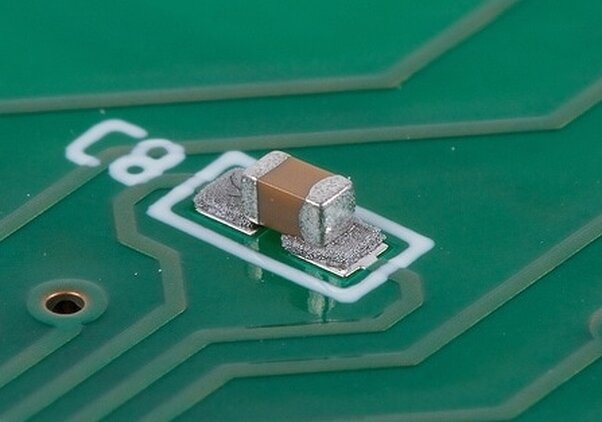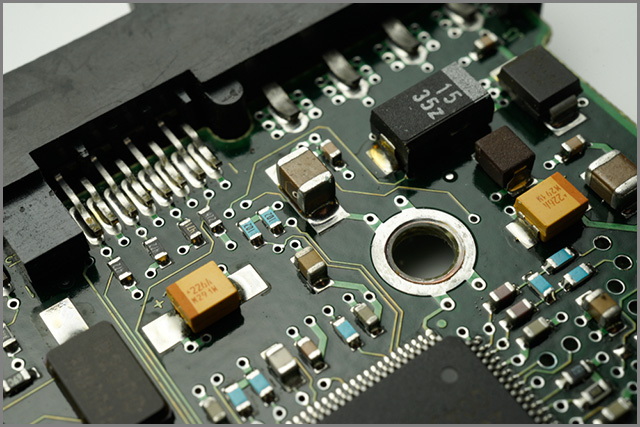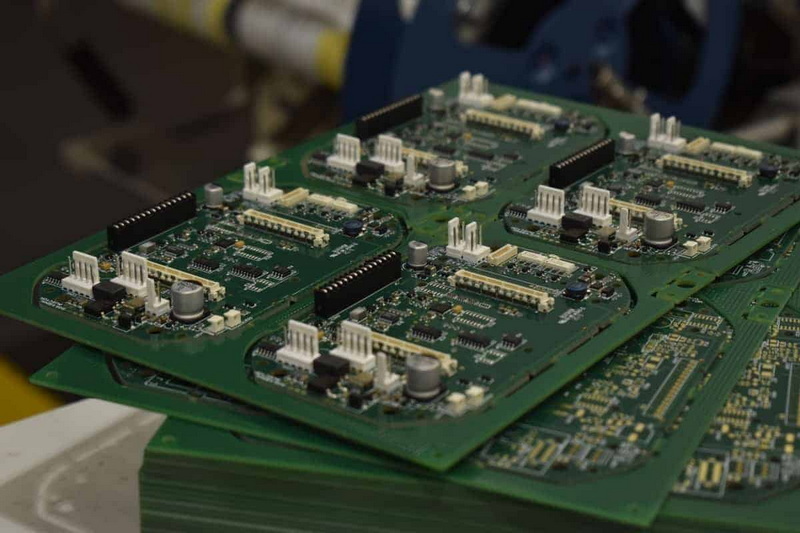Content Menu
● Definition of SMT Components
● The Evolution of SMT
● How SMT Works
● Benefits of SMT Components
● Types of SMT Components
● Applications of SMT in Modern Electronics
● Challenges in SMT Assembly
● Future Trends in SMT Technology
>> 1. Miniaturization
>> 2. Enhanced Automation
>> 3. Advanced Materials
>> 4. Sustainability
● Conclusion
● FAQ
>> 1. What are SMT components?
>> 2. How does Surface Mount Technology differ from Through-Hole Technology?
>> 3. What are some common types of SMT components?
>> 4. What is the role of solder paste in SMT assembly?
>> 5. Why is thermal management important in SMT?
● Citations:
In today's electronics landscape, the demand for compact, efficient, and high-performance devices has led to the widespread adoption of Surface Mount Technology (SMT). This technology revolutionizes how electronic components are assembled onto printed circuit boards (PCBs), enabling manufacturers to produce smaller, more reliable devices. This article delves into the workings of SMT components, their benefits, and their applications in modern circuit boards.

Definition of SMT Components
Surface Mount Technology (SMT) refers to a method where electronic components, known as Surface Mount Devices (SMDs), are mounted directly onto the surface of a PCB rather than being inserted through holes. This technique allows for a more compact design and is crucial for modern electronics manufacturing. SMDs come in various shapes and sizes, including resistors, capacitors, diodes, transistors, and integrated circuits.
The Evolution of SMT
Historically, electronic components were primarily mounted using through-hole technology (THT), where leads were inserted into holes drilled into the PCB. However, as the industry progressed, the limitations of THT became apparent:
- Space Constraints: THT required significant board space due to larger component sizes and the need for drilling holes.
- Manufacturing Efficiency: The manual assembly process was time-consuming and prone to errors.
SMT emerged as a solution to these challenges, allowing for greater component density and automation in assembly processes.
How SMT Works
The SMT assembly process involves several key steps:
1. Design Phase: Engineers use software tools to design the PCB layout, selecting appropriate SMDs based on functionality and size.
2. Solder Paste Application: A solder paste printer applies solder paste onto specific pads on the PCB where components will be placed. This is done using a stencil to ensure precision.
3. Component Placement: A pick-and-place machine picks up SMDs from reels or trays and places them onto the corresponding pads on the PCB.
4. Reflow Soldering: The assembled PCB passes through a reflow oven where heat causes the solder paste to melt and create a strong bond between the SMDs and the board.
5. Inspection and Testing: After soldering, automated optical inspection systems check for defects such as misaligned components or insufficient solder joints.
Benefits of SMT Components
The adoption of SMT offers numerous advantages over traditional THT methods:
- Higher Component Density: SMT allows for more components to be placed closer together on a PCB. This is essential for compact devices like smartphones and wearables.
- Reduced Manufacturing Costs: Automation in SMT significantly lowers labor costs and increases production speed.
- Improved Reliability: The absence of holes reduces stress on components during thermal cycling, enhancing overall reliability.
- Flexibility in Design: Designers can create more complex circuits with fewer limitations on layout due to the smaller size of SMDs.
Types of SMT Components
SMT encompasses a wide range of component types categorized by their function:
- Passive Components: Resistors and capacitors that do not amplify signals but are essential for circuit functionality.
- Active Components: Transistors and integrated circuits that control signal flow and perform computations.
- Specialized Components: Such as Ball Grid Arrays (BGAs) that provide high-density interconnections for complex ICs.

Applications of SMT in Modern Electronics
SMT components are ubiquitous in various electronic devices:
- Consumer Electronics: Smartphones, tablets, laptops, and televisions utilize SMT for compact designs.
- Medical Devices: Equipment like pacemakers and diagnostic machines rely on SMT for reliability in critical applications.
- Automotive Electronics: Modern vehicles incorporate numerous sensors and control units designed with SMT for efficiency and performance.
Challenges in SMT Assembly
Despite its advantages, SMT also presents challenges:
- Thermal Management: As devices become smaller, managing heat dissipation becomes critical to prevent component failure.
- Component Handling: The small size of SMDs requires precise handling during assembly to avoid damage.
- Design Complexity: Designing PCBs with high component density can complicate layouts and increase manufacturing costs if not managed properly.
Future Trends in SMT Technology
As technology continues to advance, several trends are shaping the future of SMT:
1. Miniaturization
The trend towards smaller devices is pushing manufacturers to develop even smaller SMDs. Innovations such as 3D packaging techniques allow multiple chips to be stacked vertically, saving space while maintaining performance.
2. Enhanced Automation
Automation is becoming increasingly sophisticated with advancements in robotics and artificial intelligence. Automated systems can now adapt to variations in production without human intervention, improving efficiency and reducing errors.
3. Advanced Materials
The development of new materials is critical for improving performance characteristics such as thermal conductivity and electrical efficiency. For instance, materials like graphene are being explored for use in high-frequency applications due to their excellent conductivity properties.
4. Sustainability
With growing environmental concerns, manufacturers are focusing on sustainable practices in SMT production. This includes using lead-free solder materials and recyclable components to minimize environmental impact.
Conclusion
Surface Mount Technology has transformed how electronic devices are designed and manufactured. By enabling higher component densities and automating assembly processes, SMT not only reduces costs but also enhances device performance and reliability. As technology continues to evolve, SMT will remain at the forefront of electronic manufacturing, driving innovation across various industries. The future holds exciting possibilities as advancements in miniaturization, automation, materials science, and sustainability further enhance this vital technology.

FAQ
1. What are SMT components?
SMT components are electronic devices mounted directly onto the surface of a printed circuit board (PCB) without needing holes drilled into it.
2. How does Surface Mount Technology differ from Through-Hole Technology?
Unlike Through-Hole Technology which requires leads to be inserted into holes in a PCB, Surface Mount Technology allows components to be placed directly on the surface, enabling higher density and smaller designs.
3. What are some common types of SMT components?
Common types include passive components like resistors and capacitors; active components like transistors; and integrated circuits such as microcontrollers.
4. What is the role of solder paste in SMT assembly?
Solder paste is applied to specific pads on a PCB before placing SMDs; it melts during reflow soldering to create electrical connections between the components and the board.
5. Why is thermal management important in SMT?
As devices shrink in size due to higher component density, managing heat dissipation becomes crucial to prevent overheating which can lead to component failure or reduced performance.
Citations:
[1] https://en.wikipedia.org/wiki/Surface-mount_technology
[2] https://web.xidian.edu.cn/ysxu/files/6253ce1964ebd.pdf
[3] https://www.eurocircuits.com/smd-surface-mount-device/
[4] https://www.electronics-notes.com/articles/electronic_components/surface-mount-technology-smd-smt/what-is-smt-primer-tutorial.php
[5] https://www.mpe-electronics.co.uk/guides/what-is-surface-mount-technology
[6] https://www.surfacemountprocess.com
[7] https://www.raypcb.com/smt-components/
[8] https://www.wevolver.com/article/smd-components




















